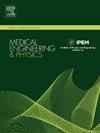Low-cost graphite and double-gate FET-based label-free biosensor for dopamine sensing to detect neural diseases
IF 1.7
4区 医学
Q3 ENGINEERING, BIOMEDICAL
引用次数: 0
Abstract
The manuscript proposes biosensors for detecting different concentrations of neurotransmitters named dopamine, which have a critical role in the human body's neurological, hormonal, and renal systems. In this work, the primary focus is to detect dopamine, whose disorder levels cause many neurological disabilities such as Alzheimer's and Parkinson's disease. In the present work, the simulation of two different structures has been studies: a) a graphite-based structure and b) a double gate TFET structure for detecting dopamine using TCAD Silvaco software. The proposed device utilizes a graphite-based structure with respective work functions of the used materials and studies the change in ON current (ION sensing factor is calculated for simulation study for VGS = 0.8 V). The cavity is increased to 800 µm for graphite-based biosensors for improved sensitivity. The graphite-based biosensors can detect up to 13.3 nM concentration of dopamine. Experimental electrochemical analysis results verify the proposed graphite-based biosensors' sensitivity for different dopamine concentrations. Another double gate field effect transistor (FET) biosensor has also been investigated for the detection of dopamine. The effective dielectric constant has been calculated using Bruggeman's model to check the sensitivity of double gate FET-based sensors for varying dopamine and uric acid concentrations. The sensitivity is increased with the increase of dopamine concentration percentage.
低成本石墨双栅fet无标记生物传感器用于多巴胺传感检测神经疾病
该手稿提出了用于检测不同浓度的神经递质多巴胺的生物传感器,多巴胺在人体的神经、激素和肾脏系统中起着至关重要的作用。在这项工作中,主要的重点是检测多巴胺,多巴胺的紊乱水平会导致许多神经系统残疾,如阿尔茨海默病和帕金森病。在本工作中,研究了两种不同结构的模拟:a)基于石墨的结构和b)双栅TFET结构,用于检测多巴胺。该装置采用石墨基结构,具有各自的工作功能,并研究了导通电流的变化(模拟研究计算了VGS = 0.8 V时离子传感因子)。石墨基生物传感器的腔体增加到800µm,以提高灵敏度。石墨基生物传感器可以检测到13.3 nM浓度的多巴胺。实验电化学分析结果验证了石墨基生物传感器对不同多巴胺浓度的敏感性。另一种双栅场效应晶体管(FET)生物传感器也被研究用于检测多巴胺。利用Bruggeman模型计算了有效介电常数,以检验基于双栅极场效应晶体管的传感器对不同多巴胺和尿酸浓度的灵敏度。灵敏度随多巴胺浓度百分比的增加而增加。
本文章由计算机程序翻译,如有差异,请以英文原文为准。
求助全文
约1分钟内获得全文
求助全文
来源期刊

Medical Engineering & Physics
工程技术-工程:生物医学
CiteScore
4.30
自引率
4.50%
发文量
172
审稿时长
3.0 months
期刊介绍:
Medical Engineering & Physics provides a forum for the publication of the latest developments in biomedical engineering, and reflects the essential multidisciplinary nature of the subject. The journal publishes in-depth critical reviews, scientific papers and technical notes. Our focus encompasses the application of the basic principles of physics and engineering to the development of medical devices and technology, with the ultimate aim of producing improvements in the quality of health care.Topics covered include biomechanics, biomaterials, mechanobiology, rehabilitation engineering, biomedical signal processing and medical device development. Medical Engineering & Physics aims to keep both engineers and clinicians abreast of the latest applications of technology to health care.
 求助内容:
求助内容: 应助结果提醒方式:
应助结果提醒方式:


